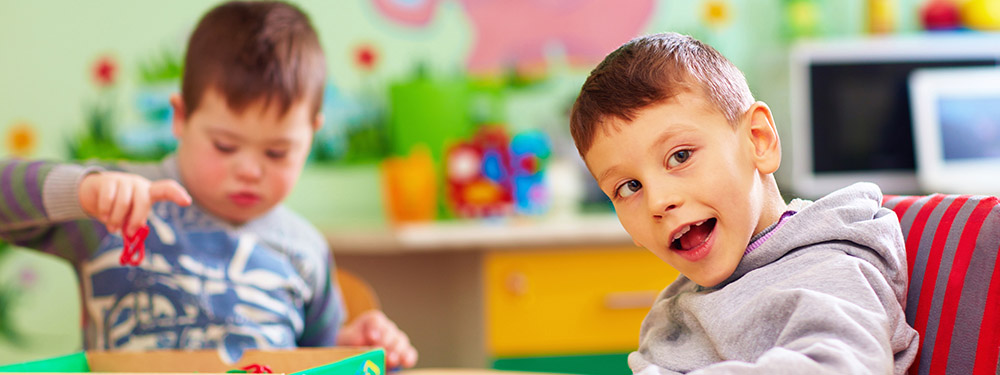
Following the announcement on 10 May that schools are to start a phased reopening from 1 June, Pauline Holbrook, Head of SEND at SSAT, reviews the guidance available for special schools and shares the planning experiences of The New Bridge Multi Academy Trust as they prepare to welcome back more of their community
What is the guidance for special schools?
- We should welcome back as many students as can be safely catered for in our setting.
- We may want to prioritise attendance based on key transitions and the impact on life chances and development.
- We may want to consider creating part-time attendance rotas so that as many children as possible can benefit from attending our setting.
- We should work with local authorities and families.
- Decisions about attendance are informed by existing risk assessments for their children and young people, which should be kept up to date.
What the guidance doesn’t say
- When this should start from.
- How many students we should look to welcome back or indeed what percentage we should be aiming for.
- Which year groups we should prioritise.
The fact that special schools are being allowed to make decisions on who returns and when based on existing risk assessments is broadly welcomed by the sector.
Will all students be able to return to school?
- Not at the moment. Some students will be in the shielded group; this is likely to continue for some time. However, it is clear that some students who should be shielding are still to receive a letter from their GP to state this. This could be due to the fact that they receive their care directly from paediatricians and other senior medical practitioners within hospitals. In such cases parents/carers should be encouraged to seek letters from their GP and inform the school to aid with planning.
- Schools are likely to experience staff shortages due to staff being in the shielded group, showing symptoms of Covid 19 and for other reasons. This will need to be part of ongoing risk assessments ensuring there is sufficient staff available who are appropriately trained.
What are special schools doing to prepare for more students?
Special schools around the country are now working on plans to further support more students accessing face-to-face education. Graham Quinn, CEO of The New Bridge Group, said that schools within his trust are currently exploring the benefits of basing all their future plans on objective evidence. The areas being considered at present are:
- Test 1: to carefully track the numbers of Covid-19 cases in Oldham and Tameside (and other areas that may be applicable). We also need to evaluate the R-level to ensure it is within or around 0.5-0.7.
- Test 2: to be convinced that testing is available to any member of staff, where it is applicable. We also need to be assured that we have an appropriate number of suitably qualified and experienced staff members to support the young people. We will promote the initial roll-out of the track and trace application for mobile phones.
- Test 3: to ensure that all our organisations consult upon and instigate a clear strategy and have an implementation plan relating to social distancing. Our premises must be fit-for-purpose and we must be able to provide necessary services.
- Test 4: to audit all PPE and be assured of its present and future availability. Where appropriate, staff will have access to relevant training relating to the use of PPE. All staff, children and young people will have training and support on applicable health and hygiene techniques (ie handwashing, covering mouth when coughing etc).
- Test 5: to continue safeguarding and monitoring to protect ‘vulnerable’ staff and students. Our full commitment is to keep all our children, young people and staff safe.
Graham has shared a series of draft documents which are being developed by his trust including guidance for parents and carers, the risk assessment process being introduced by the trust, and risk assessment documents for logistics, staff and students. These are working documents and Graham welcomes any feedback you may have on them.
- New Schooling Offer During COVID 19 Pandemic (Draft)
- New Schooling Risk Assessment – Process (Draft)
- New Schooling Risk Assessment Form – Individual pupils (Draft)
- New Schooling Risk Assessment Form – Logistics (Draft)
- New Schooling Risk Assessment Form – Staff (Draft)
There are no right or wrong answers as each special school is unique in terms of its population, location and building. Leaders are working with colleagues to devise innovative solutions based around their knowledge of their students together with robust risk assessments to look at how more students can access school in a safe and controlled manner which minimises risks to students, staff and their families.
Are you an SSAT member? Make sure you stay up to date with the latest news and policy updates
Pauline shares regular updates on the dedicated SEN email forum, exclusive to members of SSAT’s Special Schools and SEND network. If you’re not signed up to receive these updates, please get in touch and we will register you on the forum.
Not a member of SSAT? Learn more about the benefits of membership.
